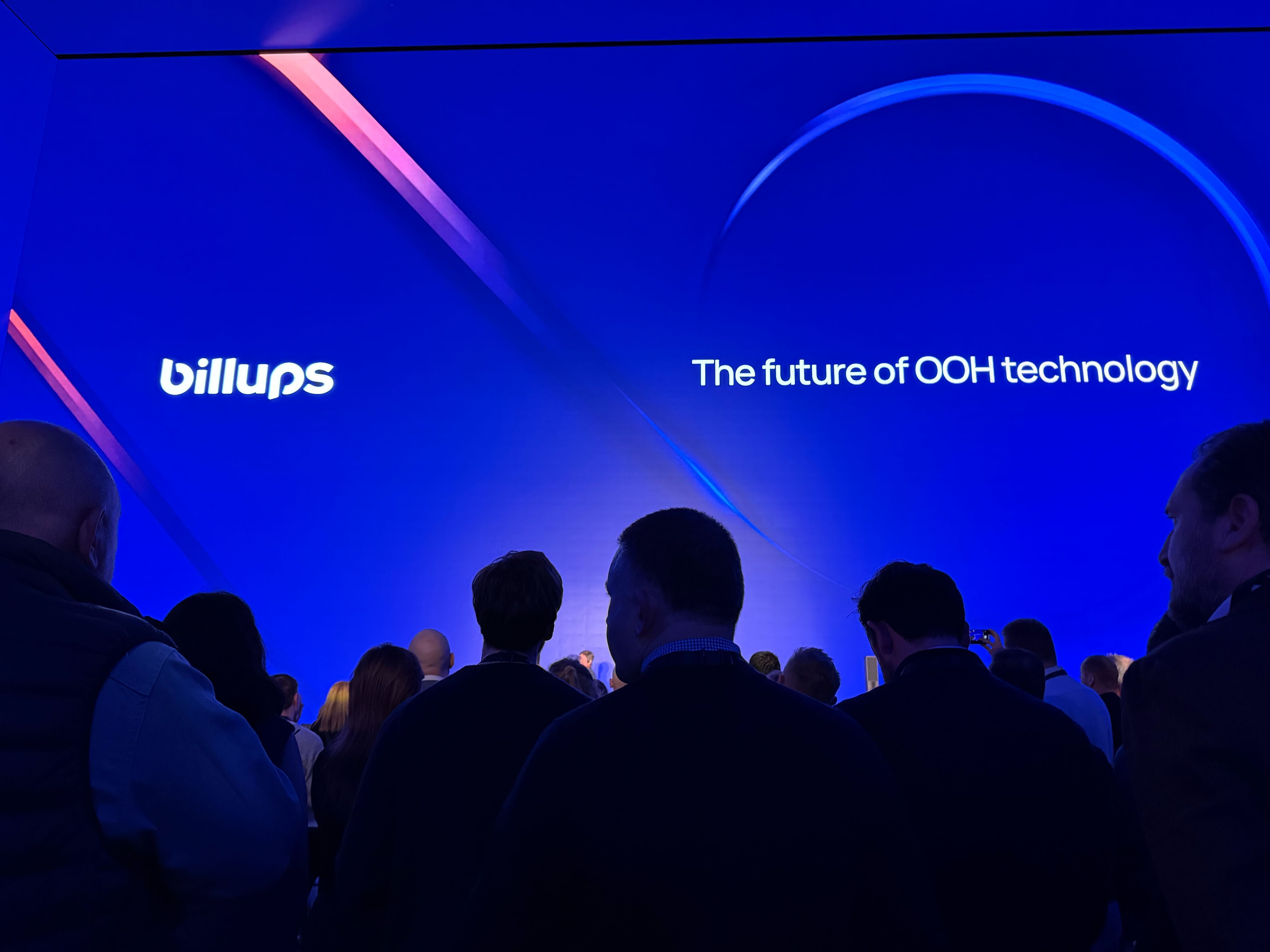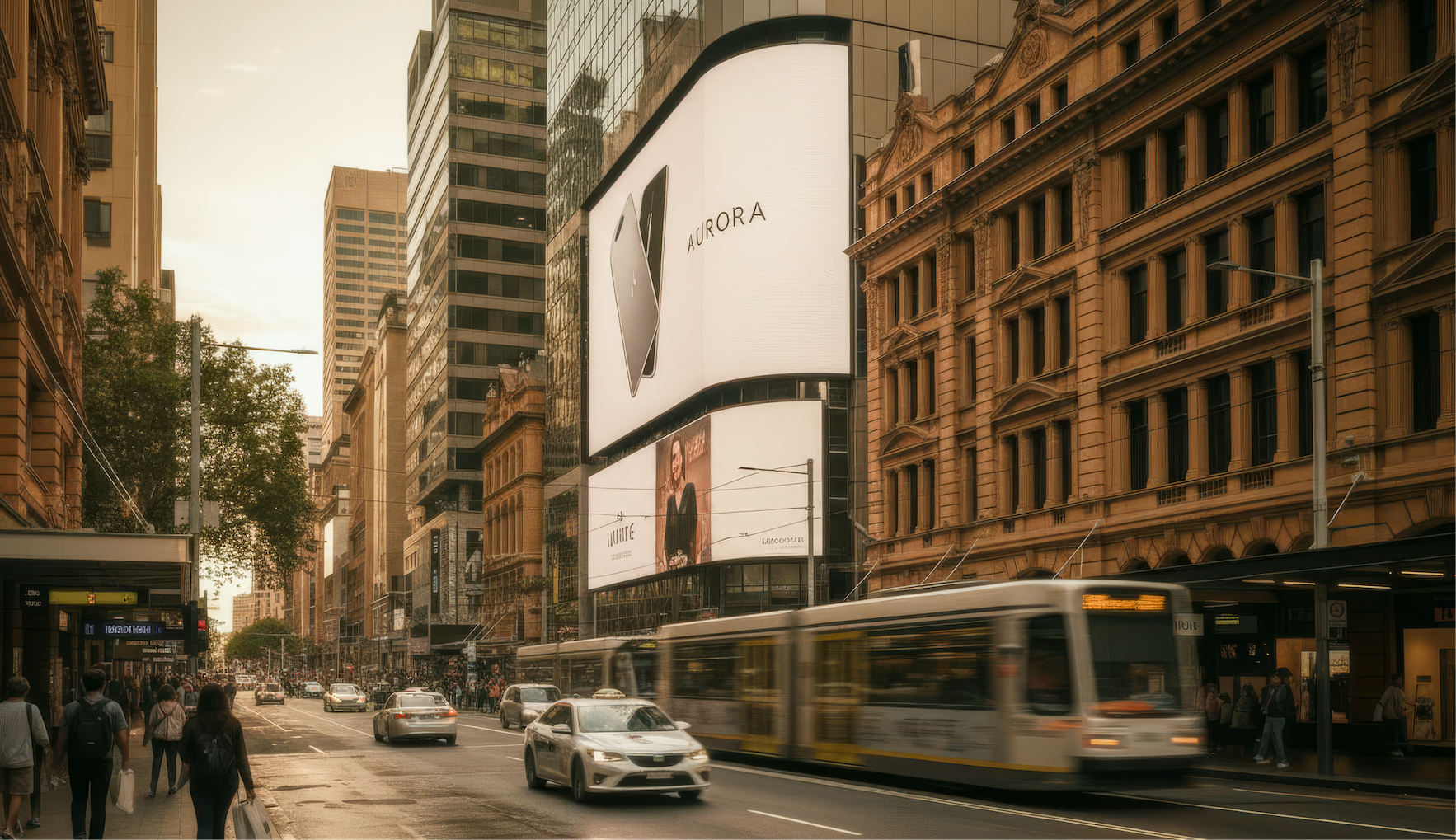Be there, be seen: Turning the 2026 World Cup into real-world impact
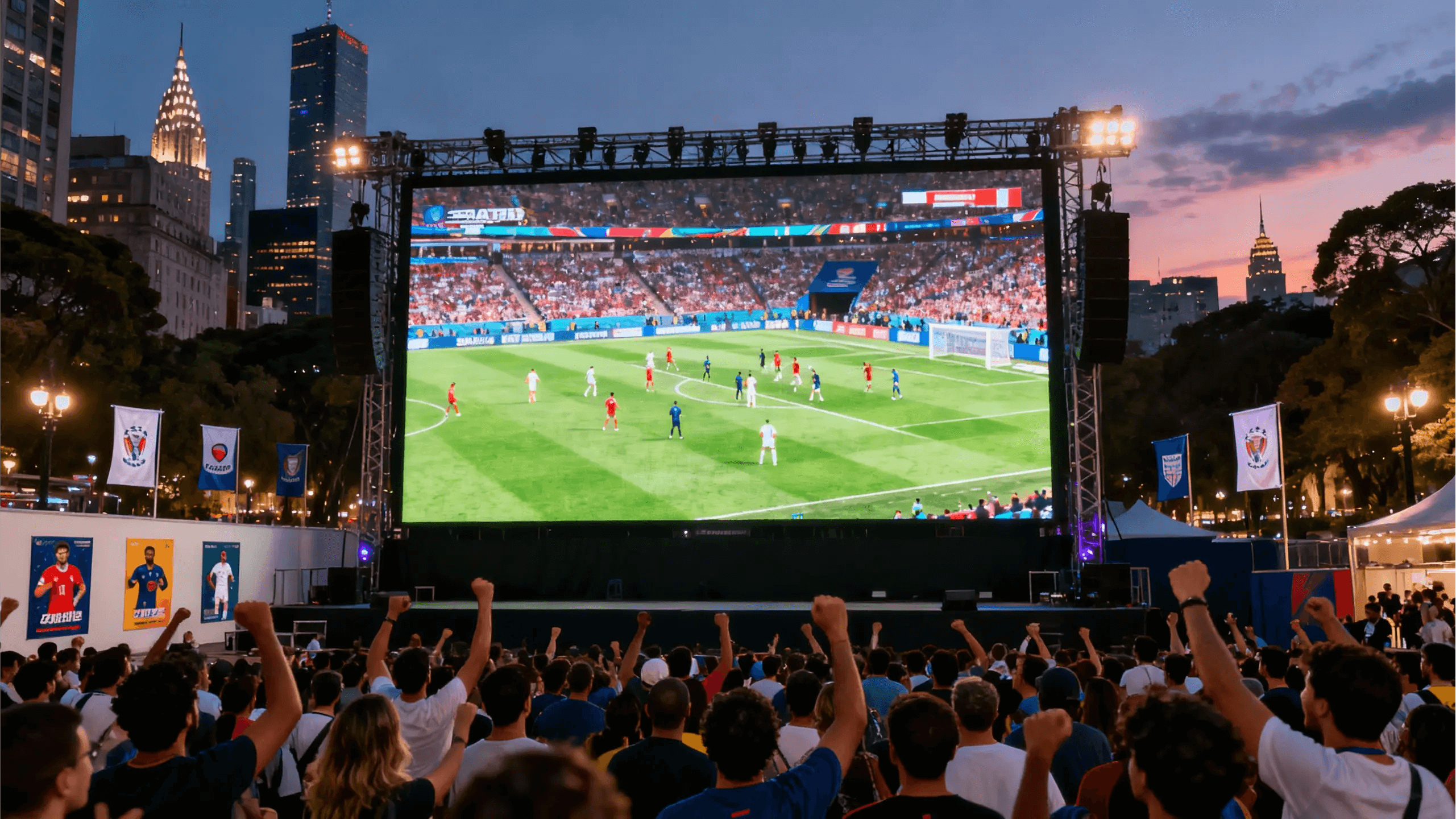
Every few years, the world doesn’t just stop for sport - it feels it. From the Super Bowl to the Olympics, live events aren’t just competitions; they’re cultural lightning rods that bring cities to life, stir emotions, and unite communities across borders.
In 2026, North America won’t just host matches - it’ll host a moment in history. With 104 games across 16 stadiums in the U.S., Mexico, and Canada, the FIFA World Cup will be the largest ever, attracting over 5 million in-person fans and an additional 6 billion viewers globally.
For brands, it’s not just an opportunity - it’s an invitation to show up where passion lives. Out-of-Home (OOH) advertising will be the medium that turns fan movement into brand magic, meeting people where excitement, pride, and experience collide.
The real question isn’t if your brand will show up, but how real that presence will feel when the world is watching.
Table of contents
- The cultural influence of sports
- Why OOH is the medium of sports moments
- The 2026 World Cup: A global stage in North America
- From airports to stadiums: The fan journey
- Beyond football: OOH and the future of live events
Key takeaways
- The FIFA World Cup 2026 will be the largest sports event ever hosted in North America.
- OOH is uniquely positioned to connect brands with fans during live sports.
- Demand for premium placements is surging; early planning is critical.
- OOH goes beyond awareness — it drives measurable fan action and local impact.
- Lessons from the World Cup apply across all major sports moments.
1. The cultural power of sports
Why sports still hold the world’s attention and why that matters for brands.
Sports don’t just entertain - they define eras. They inspire connection, ignite debate, and move billions in economic impact. The World Cup is more than a tournament; it’s a shared cultural moment that unites global attention around one simple truth: passion travels.
The brands that recognize sports as culture, not just content, will be the ones fans remember long after the final whistle.

2. Why OOH is the medium of sports moments
Where fans gather, OOH thrives - creating real-world moments that stick.
OOH doesn’t live online. It lives in airports, train stations, and city streets - where people cheer, wait, travel, and celebrate. Imagine fans land in New York. They see their team’s colors everywhere - in Times Square, on bus wraps, even at baggage claim. They pull out their phones, share what they see, and just like that, your brand becomes part of their trip. You’re not running a campaign - you’re becoming a core memory.
Data backs it up:
- 90% of fans take real-world action after seeing OOH ads (OAAA).
- 99% of attendees who saw OOH spent money locally (Street Fight).
- 96% of adults interested in World Cup OOH ads said they would engage if they saw one.
OOH isn’t just visibility - it’s activation. It turns awareness into participation. Most marketers will wait too long; the smart ones are mapping fan journeys now.
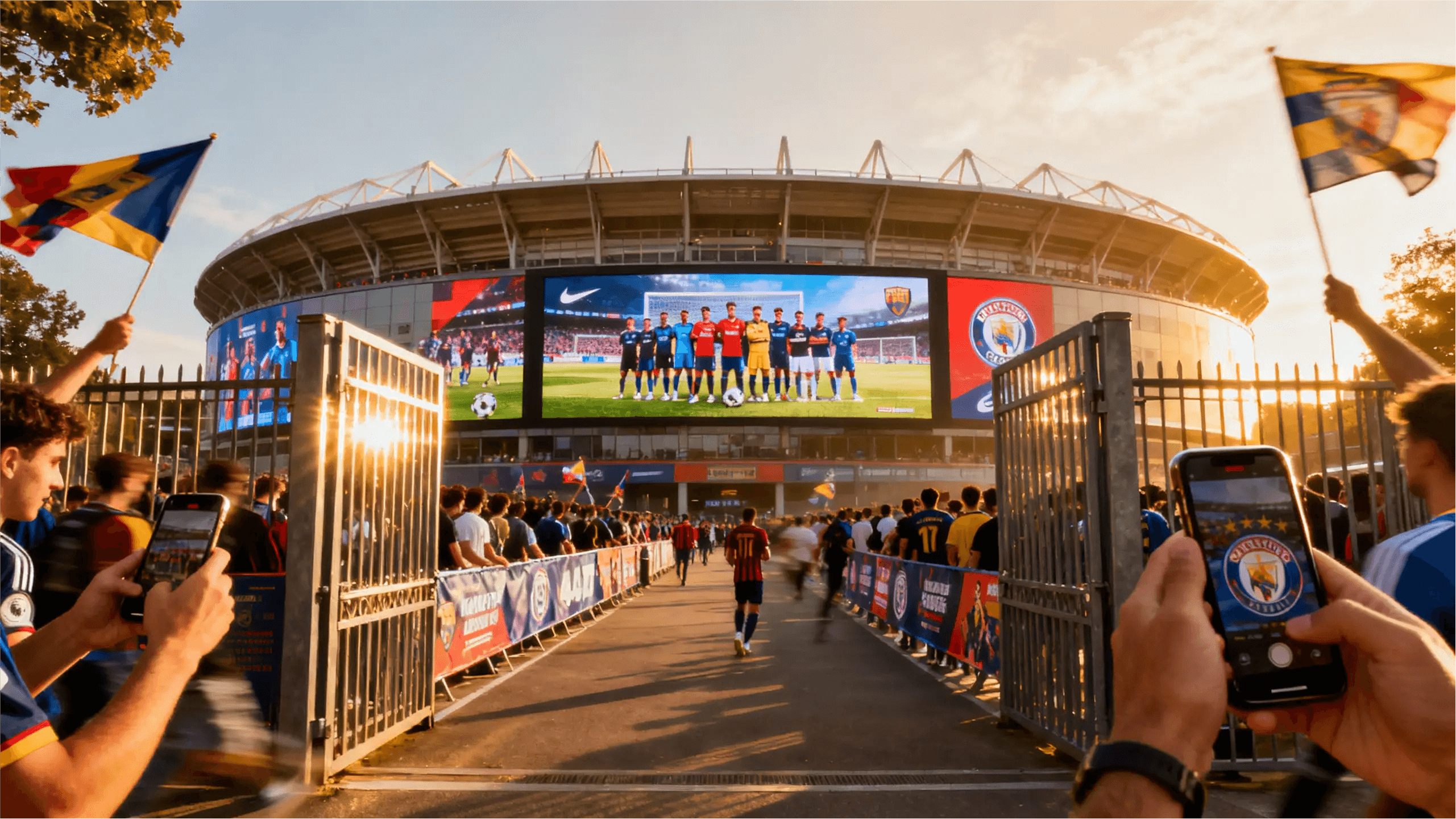
3. The 2026 World Cup: A global stage in North America
Why this tournament is unlike any marketing opportunity we’ve seen.
This will be the biggest World Cup in history - 104 matches over 39 days in 16 host cities across three nations. That scale means visibility like never before: from digital billboards in Toronto to street murals in Mexico City to wrapped trains in Los Angeles.
For advertisers, it’s not just about exposure; it’s about presence. Premium OOH inventory near stadiums, airports, and transit hubs is already selling fast. If you’re not planning early, you’re planning to be invisible.
4. From airports to stadiums: The fan journey
How OOH transforms the fan trip into a seamless, story-filled experience.
From the moment a fan scans their boarding pass to the second they celebrate in the streets, OOH is there - guiding, energizing, and amplifying. Whether it’s digital walls sharing live match stats or interactive billboards that unlock team content, brands can shape an emotional journey that follows every step of travel and celebration.
In 2026, every city is a stage and OOH is your front-row seat.
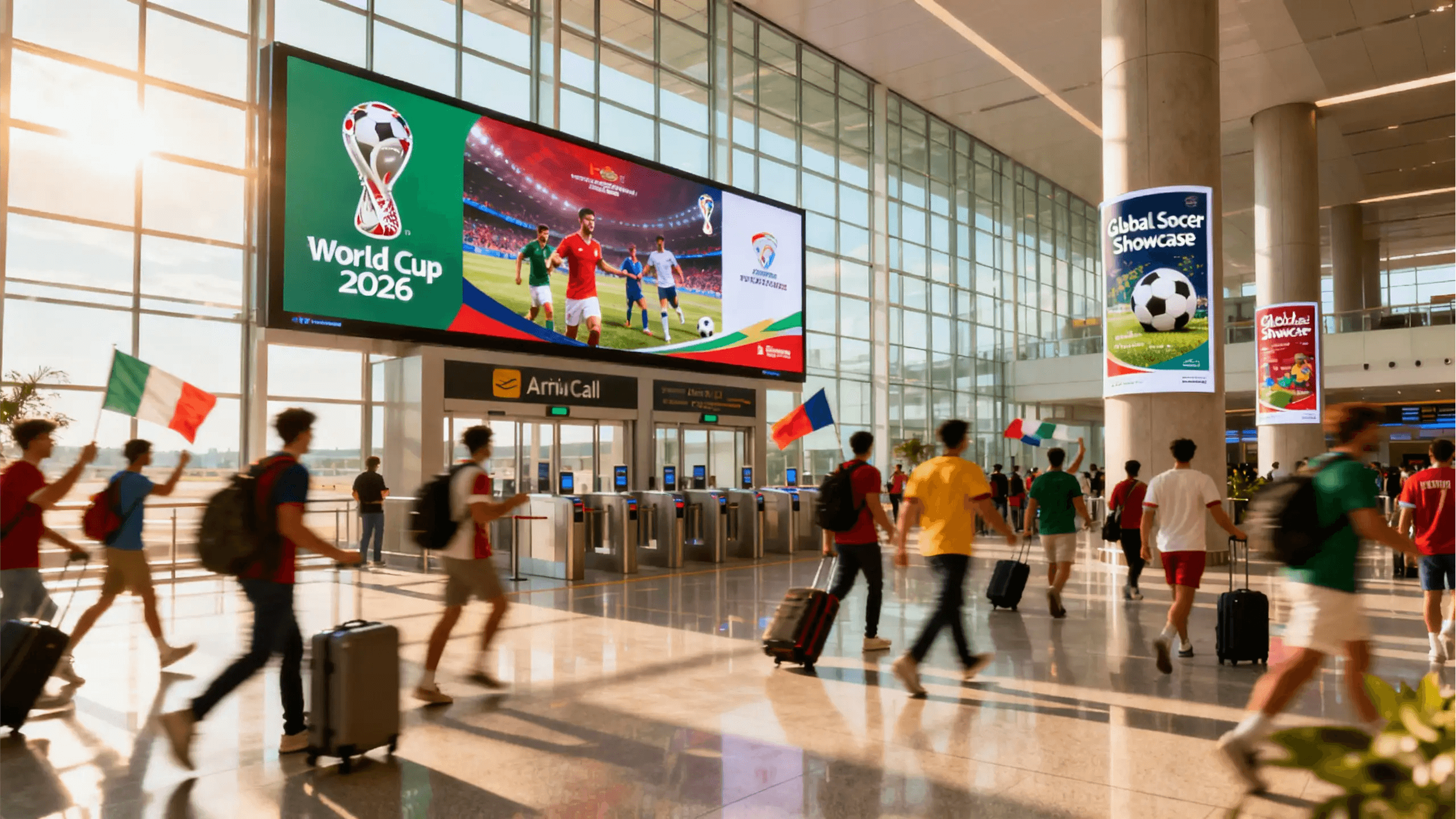
5. Beyond football: OOH and the future of live events
The lessons of the World Cup extend far beyond the pitch.
Every major event, from Formula 1 to the Olympics and music festivals, creates the same emotional gravity. OOH is the only medium that scales across them all, translating moments of mass attention into meaningful, real-world engagement.
As technology evolves, expect OOH to fuse data with culture - blending live fan energy with personalized experiences. Sports may be seasonal, but shared emotion is timeless.
The future of live events belongs to brands that show up where emotion lives: outside, together, and in the moment.
Bottom line: In 2026, fans won’t remember who bought the most impressions - they’ll remember who showed up with them in the real world.
Helpful resources
Explore our article library

